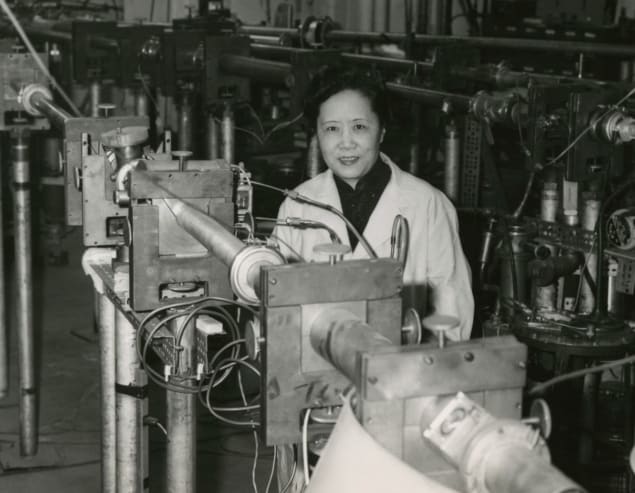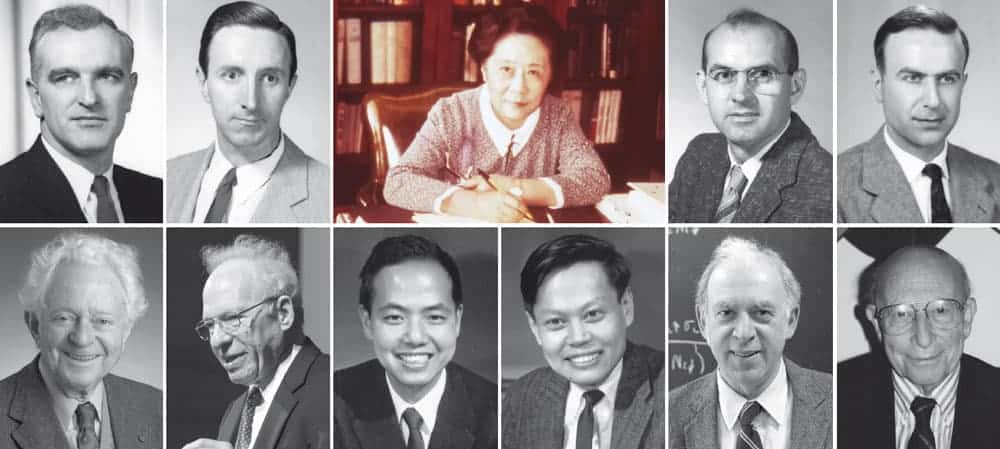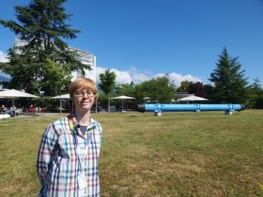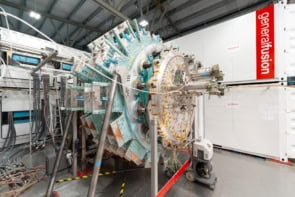The 2020 Nobel Prize for Physics will be announced on Tuesday 6 October. In the run-up to the announcement, Physics World editors have picked some of the people who they think have been overlooked for a prize in the past

The 1957 Nobel Prize for Physics was shared by Chen Ning Yang and Tsung-Dao Lee “for their penetrating investigation of the so-called parity laws which has led to important discoveries regarding the elementary particles”. However, some physicists argue that the Chinese-American physicist Chien-Shiung Wu should have shared the prize for providing the experimental evidence for Lee and Yang’s theoretical prediction of parity violation. Furthermore, some believe that Wu was denied the prize because she was a woman.
Based at Columbia University in the late 1950s, Wu designed an experiment that tested parity laws by observing beta decay at ultracold temperatures. While Wu was an expert in measuring beta decay, she collaborated with scientists at the National Bureau of Standards (NBS) in Washington DC (now NIST) to meet the cryogenic requirements of what is now known as the “Wu experiment”.
In an 2012 article for Physics World (“Credit where credit’s due?”) the Hungarian chemist and historian of science Magdolna Hargittai dug deep into the claims and counter claims of who, if anybody, should have shared the 1957 prize with Lee and Yang.
Three competing groups
In a nutshell, it is complicated. According to Hargittai’s article, Wu and colleagues saw the first hints of parity violation on 27 December 1956. Shortly after news of this preliminary result got out, an independent group working at the Columbia cyclotron did a quick measurement in early January and observed parity violation in muons – at about the same time as Wu and colleagues were making their definitive measurements. What is more, a third group at the University of Chicago had been looking for parity violation since the summer of 1956 and had also found preliminary evidence by December.
The Wu–NBS and Columbia cyclotron teams published their results in the February 1957 issue of the Physical Review and the Chicago paper was published in the March issue of the same journal.

Credit where credit’s due?
And therein lies a major barrier to Wu sharing the 1957 prize. According to the Nobel rules, the 1957 prize cannot be awarded for work published in 1957. Indeed, the Nobel Prize Nomination Archive shows that neither Wu, nor anyone else who had measured parity violation in 1956-57, had been nominated for the 1957 prize.
So what is Hargittai’s conclusion on whether Wu was overlooked for a Nobel?
“My view is that Wu made an outstanding contribution to bringing down the axiom of parity conservation in weak interactions,” writes Hargittai. “But to say it was an injustice that she did not win a Nobel prize is an oversimplification of a complex story.”
Eminent supporters
It is worth pointing out that some of the most eminent physicists of the day did champion Wu’s case for a prize – including the Nobel laureates Willis Lamb, Polykarp Kusch and Emilio Segrè. Starting in 1958, she was nominated for the Nobel prize at least seven times until her death in 1997 (only nominations made before 1966 are currently available online to the public, which means there could, in fact, have been more).
So regardless of whether it was the rules or sexism that denied Wu a Nobel prize, there is no doubt in my mind that she deserved one – if not in 1957, then certainly thereafter. Indeed, writing in Physics World after Hargittai’s article was published, Yang said that Wu’s contribution went well beyond her considerable experimental prowess and included her deep perception of why parity must be tested. In that same issue, Herwig Schopper, who was one of those to have nominated Wu for a Nobel prize, expressed the view that Wu and indeed others who made the experimental measurements were denied a prize because of the rule that only three winners can be named.



